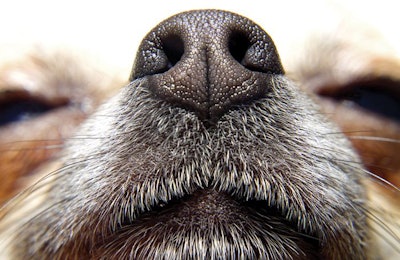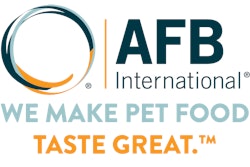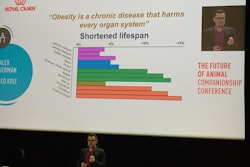
The sensory aspect of pet food formulation plays a vital role in the success of the final product — all the nutrition and well-balanced diet claims in the world won’t mean anything to customers if their pets turn their noses up during mealtime. Further, the food isn’t likely to even make it to the pet bowls if it looks (or smells) offensive to the shopping pet parent. This means pet food formulators must keep a delicate balance between ensuring dogs and cats will eat their food and making sure it passes muster with human senses … two sets of perception that don’t always match.
The role human perception plays in pet food
“People want their pets to eat what they eat,” said Jill Villarreal, applied behavior research with pet food palatability company AFB International. “For example, vegans want vegan treats for their dogs. Changing food philosophies in human food are driving the formulation of pet food.”
That means companies that deal in sensory technologies for pet food must do a sort of double duty, working to measure both animal and human perception of potential formulations.
“The human perception is important in driving formulations and label claims to ensure that the pet food is reflective of the trends in human perception of appropriate nutrition,” said Andy Campbell, marketing director for Eurofins Scientific, an international life sciences company that provides a range of analytical testing services across multiple industries. “Laboratories can verify that products contain the stated nutrient and that perceived negative attributes (e.g., GMO) are absent.”
It doesn’t matter what aspect of pet food formulation is involved; pet food experts know everything from taste to smell to color will be scrutinized by customers and consumers alike.
“An interesting shift in the pet food industry is owners’ eagerness to buy pet products that reflect their own eating habits, wellness decisions and overall lifestyle,” said Gale Myers, technical services manager in pet food and confections for Sensient Technologies, a global manufacturer and marketer of colors, flavors and fragrances. “It’s no longer a surprise that today’s consumers are wary of artificial ingredients like synthetic colors when it comes to the food and treats they give their four-legged family members. Natural positioning resonates better with most shoppers these days.”
Influence of the human-animal bond on sensory technologies
Beyond direct human perceptions of pet food, there is an additional aspect to consider: the ideas humans have of how their pets will perceive pet food. So in reality, sensory experts must deal with three separate possible critiques of pet food products.
“Diana Pet Food experts in palatability measurement have developed new protocols and criteria reflecting meaningful patterns in the pet owner’s perception of a pet food diet’s palatability,” said Sophie Munier, editorial content and scientific communication manager for Diana Pet Food, a company focusing on innovative palatability solutions in pet food. “The Liking test and kinetics of consumption are some of them. Based on an analysis of pet body language and behavior before, during and after a meal, these complementary methods can be combined with the ‘versus’ test to deliver an exhaustive evaluation of pet foods’ overall sensory performance.”
“AFB uses sensory technologies with both pets and pet owners to evaluate our palatants,” said Villarreal. “With humans, the Likert scale is a common tool in the sensory industry designed to measure attitudes or opinions. AFB also uses human ratings of their liking of the aroma, their belief about the aroma appeal for a dog or cat, and human ratings of aroma attribute intensity (such as broth, meaty, vegetable, etc.). We also measure dog and cat responses to aroma to quantify interest and appeal.”
As much of the product scrutiny comes either as pet owners are shopping for food or feeding it to their pets for the first time, some sensory aspects find themselves being prominently displayed right on the packaging.
“Consumers are taking the time to scan ingredient lists on products for their furry family members,” said Myers. “While natural ingredients like fruit and vegetable juices for color can help win consumers over, what’s even more compelling food pet food developers are the results of Sensient’s recent consumer research concluding the correlation of color to perceived positive health benefits in pet food.” According to the company’s research, pet food customers associate superior nutritional quality with color variety — dry pet food containing multi-colored bits and pieces was perceived as the most appealing.
There is so much to test for that making sure everything is in order can be a complicated task. That’s why various sensory and analytical companies exist, and take pride in providing services for whatever segment they’ve grown in.
For example, “Eurofins uses the full spectrum of analytical techniques to determine nutritional adequacy, food safety, product quality and label compliance,” said Campbell. “Only by using a wide variety of technologies can these attributes be correctly evaluated in a timely and cost-efficient fashion.”
What’s in the future of pet food sensory technologies?
Drilling down to ever-more-specific aspects of sensory experiences will definitely play a role in future technologies, according to experts.
“Mealtime is a complex sensorial cascade, and pets’ feeding experiences are linked with the numerous stimuli produced by food,” said Munier. “Each tasting step involves specific food attributes that will stimulate different pets’ senses. One evolution of sensory technologies will probably consist in studying the palatability impact of each sensorial attribute of pet food separately.”
With so many directions for pet food formulators to focus on when it comes to palatability, smell, look and other sensory-related perceptions of their products, it’s no surprise that experts see sensory technologies becoming more intertwined.
“In the future, data science, analytical chemistry, pet behavior and classic human sensory science will likely be more intertwined to gain valuable insights,” said Villarreal. “We are excited to have cross-functional collaborations within AFB and the opportunity to work with universities to advance different areas of research.”
And of course, what goes on in the human food world will inevitably follow in pet food.
“Consumers are increasingly pursuing more plant-based ingredients in their own food purchases, which is translating to the pet arena as well,” said Myers.
Three vital elements for successful pet food sensory analysis

















